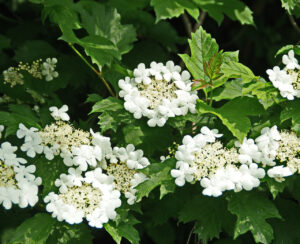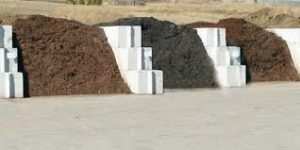The Heat is On & Your Yard Needs TLC
It seems that July and August get warmer each season. And your lawn and landscape need tender loving care during the dog days of summer.
What Is a Good Schedule for Lawn Care in August?
During this month of relentless heat, you want to dial back on lawn maintenance—especially mowing, fertilization, insect, and weed controls.
Why?
The ground is dried out.
At Jamison Lawn Care, we’re on step three for our customers who joined our lawn maintenance program. Our late summer fertilizer contains slow-release nutrients and other micronutrients that keeps the turfgrass maintaining its vigor and color.
Our late summer lawn fertilizer also repairs plants from summer stress effects.
We also put down surface insect control for those pesky grubs to keep them from overwintering as well as nutsedge control. Nutsedge is a weed that can spread through rhizomes, nutlets, and seed heads. They’re lime-green and look like grass, but will grow higher than normal turf.
Nutsedge also proliferates in areas that have poor drainage.
Instead, these cool season grasses will green up again. In the fall, you want to make your appointment for core aeration and overseeding to allow the soil to breathe and thicken up in areas where there was grass loss.
Also, we still mow lawns during heatwaves, but will cut your grass higher to avoid damaging the turf.
It’s okay to let your lawn grow longer—it’s better for the turfgrass plant because it conserves energy, allows its root system to go deep, and prevents weeds from taking over.
Read more: How to Water Wisely
What Your Warwick Township Lawn Needs Right Now
Your Jamison lawn needs 1” to 2” of water per week, including any heavy rainstorms that pushed through later in the day.
Also, you want to water your lawn infrequently, so no more sprinkling the lawn lightly at night anymore. It doesn’t help your turf at all.
Instead, invest in soaker hoses or an in-ground irrigation system that delivers the water deep into the soil. You can also buy several rain gauges to spread out in different parts of the yard.
When those splash ‘n’ dash storms hit in the late afternoon, you’ll get an accurate reading of how much water reaches the ground in the different parts of your property. For example, a wooded area would have less rain hitting the soil because of the leaf canopy.
However, your sunny front lawn will get the total amount of rain that could measure up to 2”.
You use these readings from the rain gauges to set your lawn sprinkler system to go on for a set number of minutes or hours to make up for the deficit.
Once the weather cools off, it’ll be time to apply grub control to your yard to prevent grubs from overwintering in the soil.
Helping Your Landscape and Flowerbeds Deal with the Heat
Again, your trees, shrubs, and flowerbeds need water—about 1”-2” per week. You can irrigate with
- Dripline irrigation
- Soaker hoses
- By hand-watering.
Also, it’s time to refresh your mulch because it holds in moisture, regulates soil temperatures, and freshens up your plants.
Learn more: Why Your Garden Beds and Landscapes Need Mulch
It’s busy in the garden during August. Everything’s looking a bit tired after a hot and dry summer. Be aware of the following landscaping jobs:
- Deadheading – New varieties of plants don’t need as much deadheading compared to older versions. But you can encourage re-blooming when you deadhead butterfly bushes, geraniums, and other perennials.
- Weeding – The never-ending chore—even if you put down weed control and mulch in your beds and around trees. It takes only one soaking rain, and the weeds pop up quickly.
- Shape up your shrubs and trees – Now’s the time to finish any pruning jobs before the middle of August. For example, some tree species have suckers that grow from the root zone. Snip those suckers off the trees’ base. Also, Rose of Sharon and other flowering shrubs can get “hairy” where branches grow out and make the bush look messy. You can trim those with care.Save any hard pruning for the late winter and early spring.
- Look for bagworms growing on arborvitae and other evergreens –Bagworms look like tiny pinecones hanging from the woody plant. Pick them off before the worms hatch because they’ll kill your affected evergreen.
Have questions about your lawn and landscape? Call us at Jamison Lawn Care, 267-621-4747, to visit your property or fill out our contact form.
Source:
AgwayWildBirdingCenter.com, August Garden Tips.
Extension.PSU.edu, Lawn Management through the Seasons.
Plant of the Month: Black-Eyed Susans
Black-eyed Susans (Rudbeckia hirta) is a native plant in Pennsylvania. While you may grow domesticated ones in your garden, you’ll also see them growing in the wild along roadsides and fields.
If you’re thinking about growing Black-eyed Susans, remember that they like well-draining soil and full sun to part sun exposure. Since these flowers are natives, they can tolerate dry and hot conditions.
Black-eyed Susans come in orange, red, and yellow. However, you can find different variations of Black-eyed Susans in independent garden centers.
Black-eyed Susans are the most popular wildflower. These natives attract birds, butterflies, and bees to your garden for the flowers’ nectar and seeds.
Black-eyed Susans are part of the aster family that includes daisies and asters. Black-eyed Susans make excellent cut flowers and go well with late summer and fall floral designs.
Black-eyed Susans grow in bunches, spread out 12” –18” wide, and grow 1’–3’ tall. If you deadhead spent blossoms, you’ll be rewarded with smaller blooms later in the fall.
Read more: While springtime is a distant memory, fall cleanup will soon start again
Black-eyed Susans symbolize the following:
- Justice
- Motivation
- Positive change.
If your Black-eyed Susans need dividing this fall or you want to add these beauties to your Jamison landscape, call us at 267-621-4747 to visit your property or fill out our contact form.
Sources:
Alamanac.com, Growing Black-Eyed Susans: How to Plant, Grow, and Care for Black-Eyed Susans.
GardenLoversClub.com, 11 Different Types of Black-Eyed Susan (Rudbeckia).
PetalRepublic.com, Black-Eyed Susan Flower Meaning, Types, and Uses.
|
|
Jamison Lawn Care | 267-621-4747
P.O. Box 32, PA 18929
www.jamisonlawncare.com
|
|

|
|





